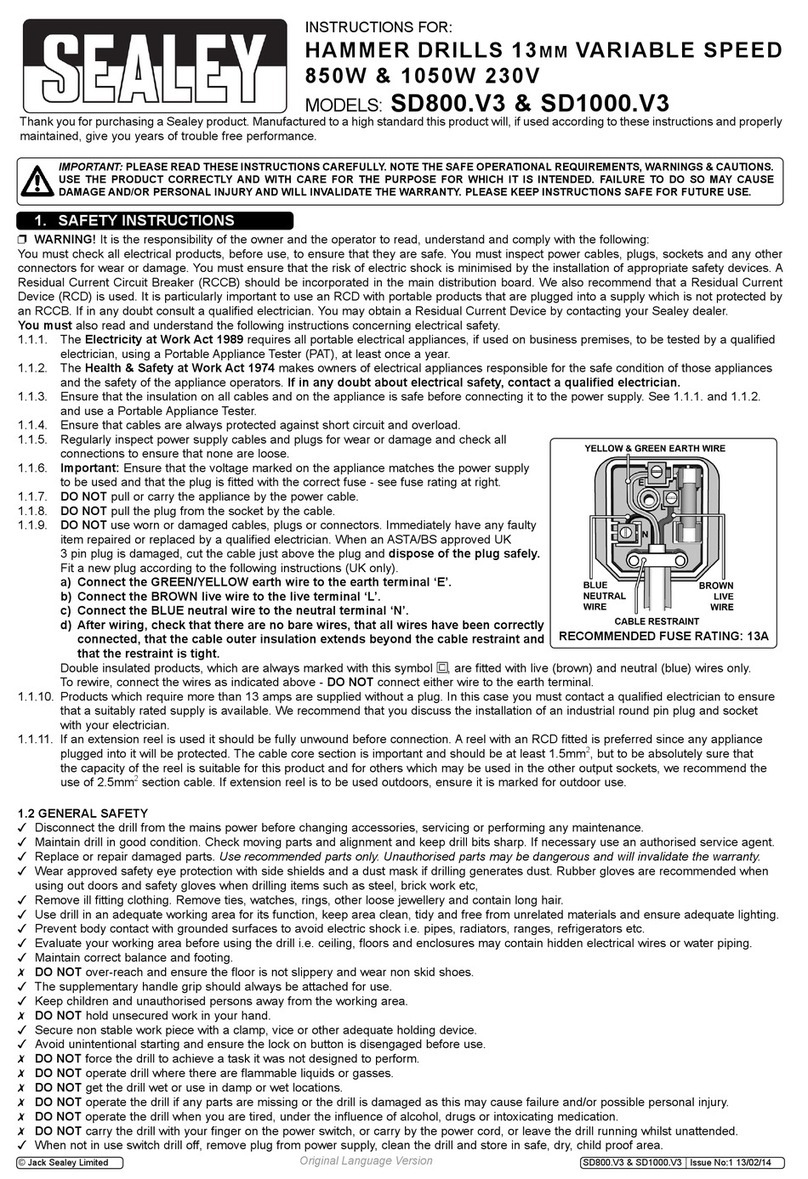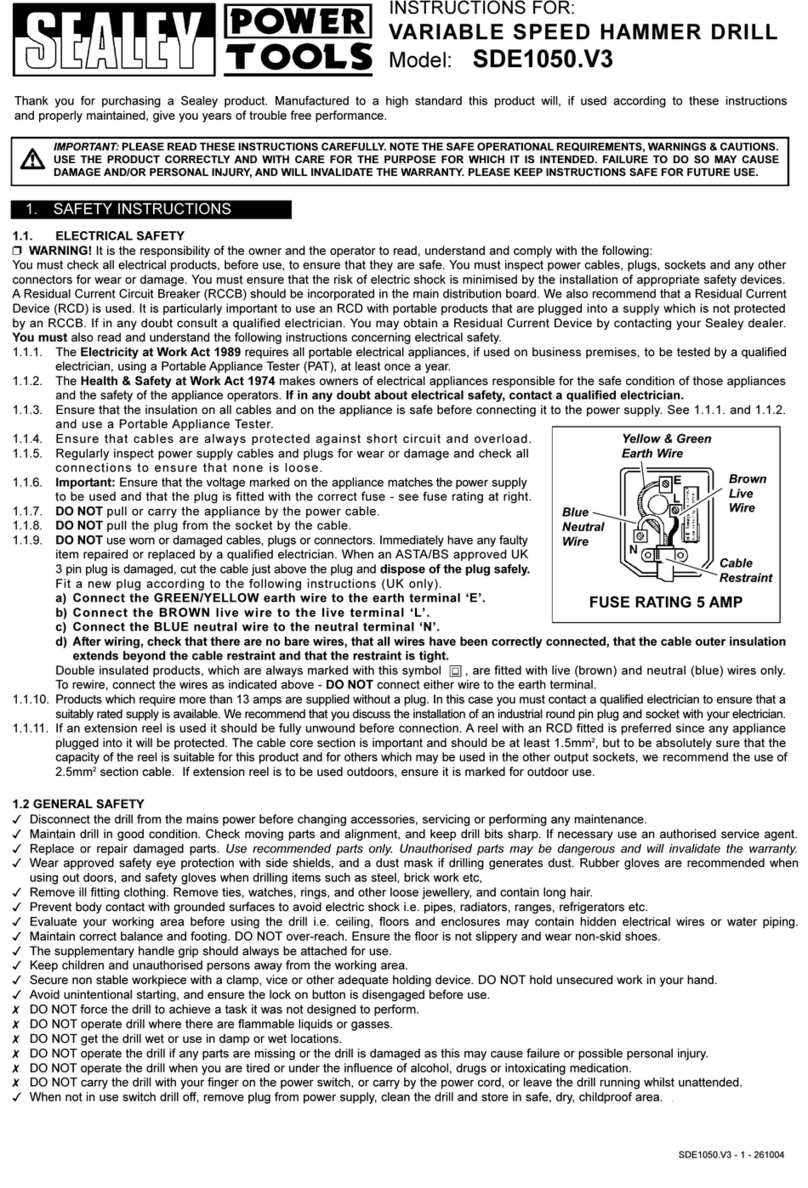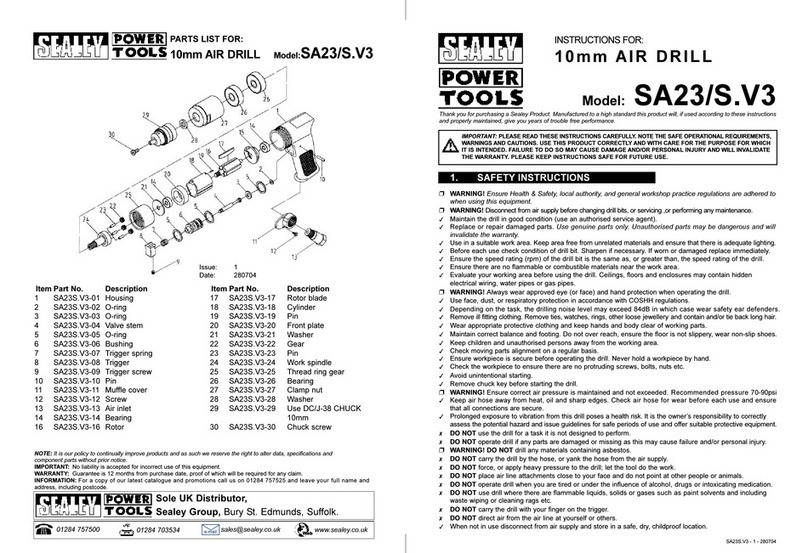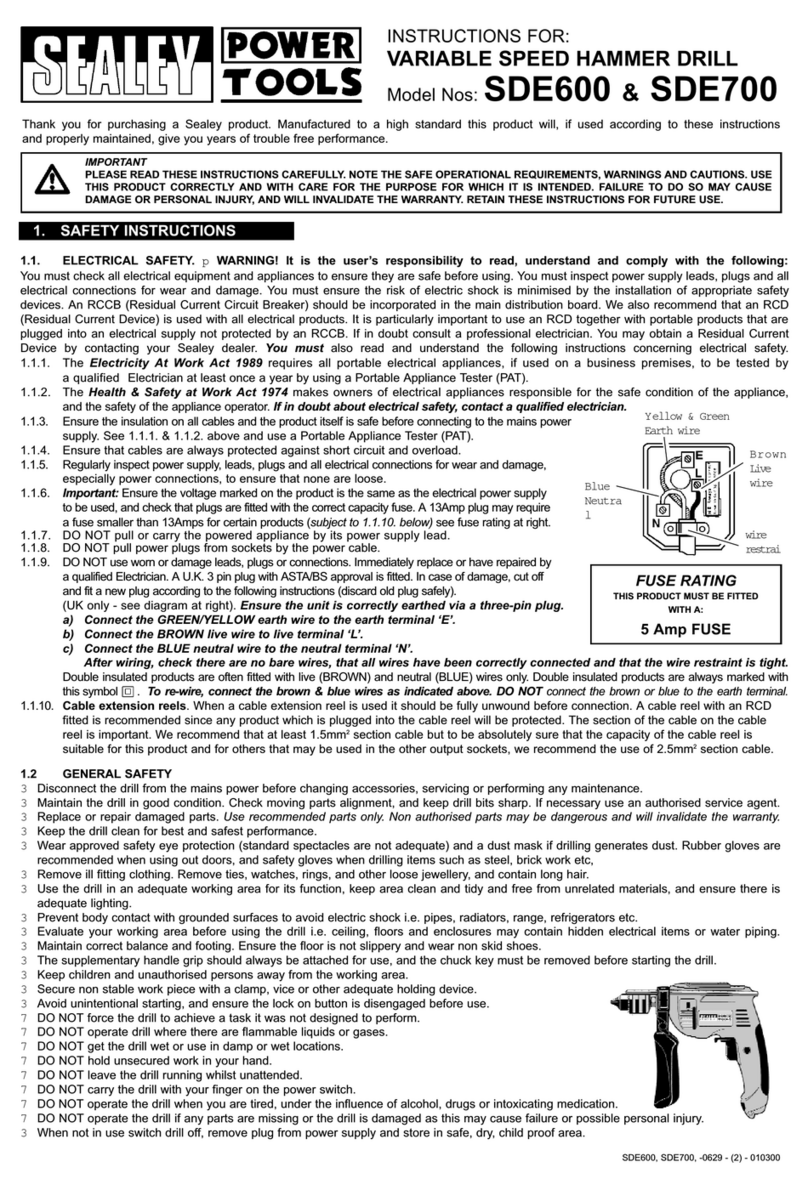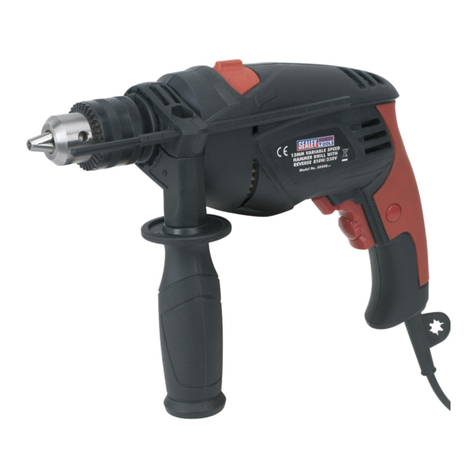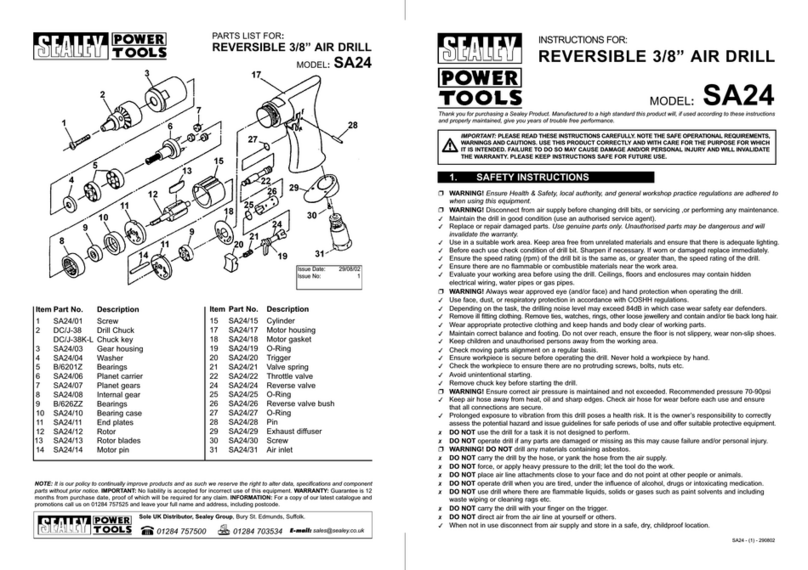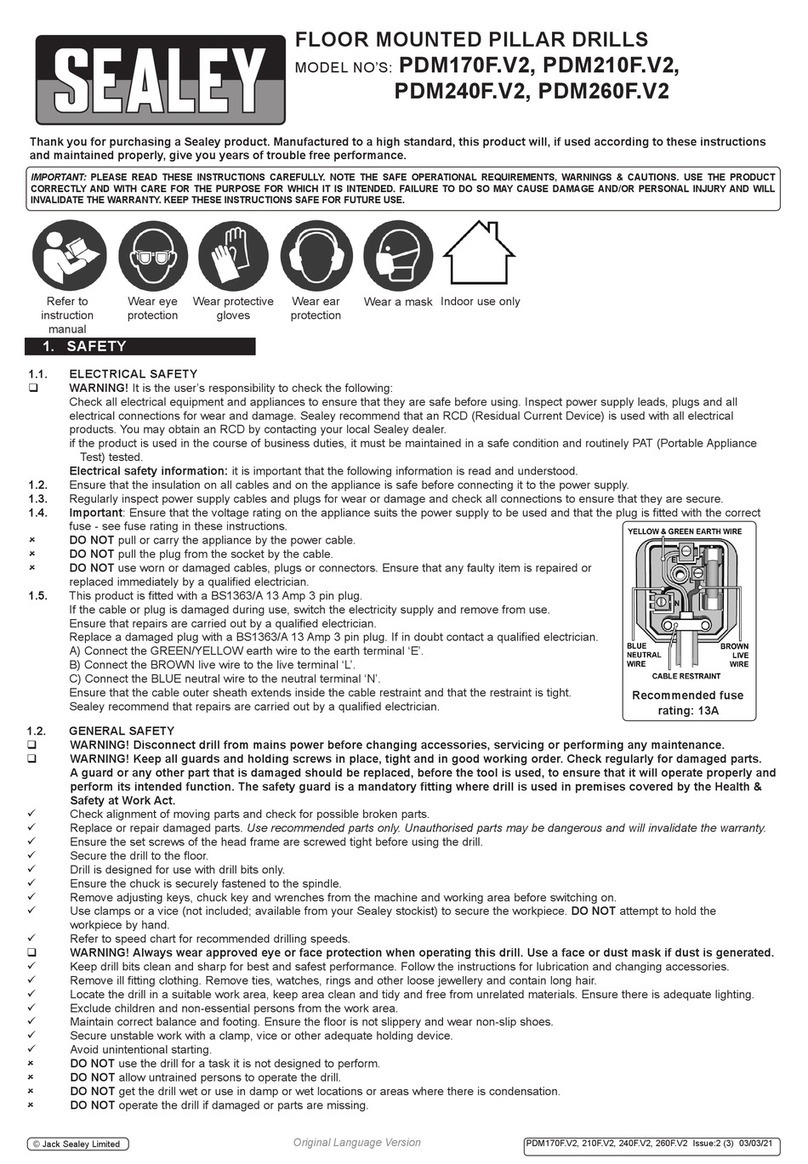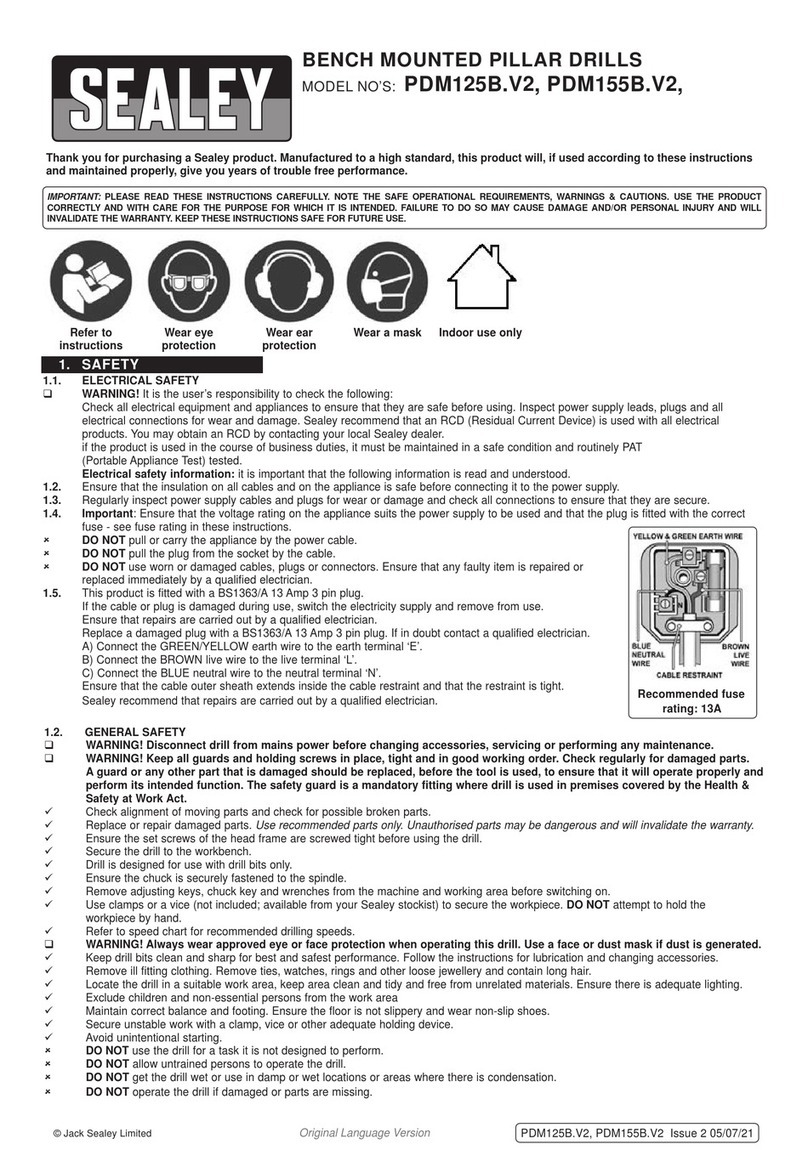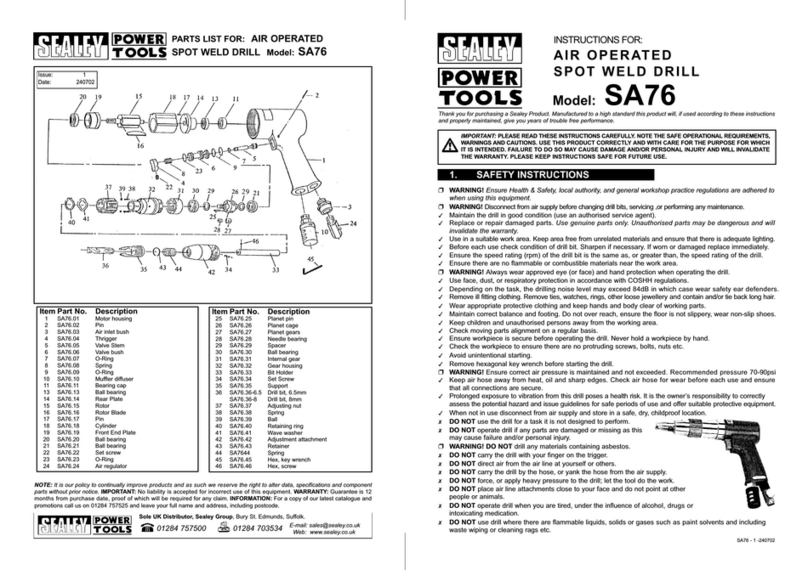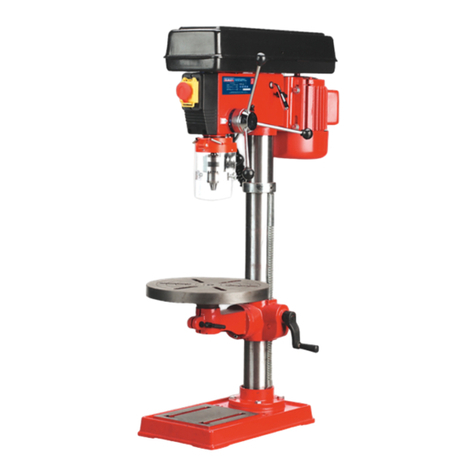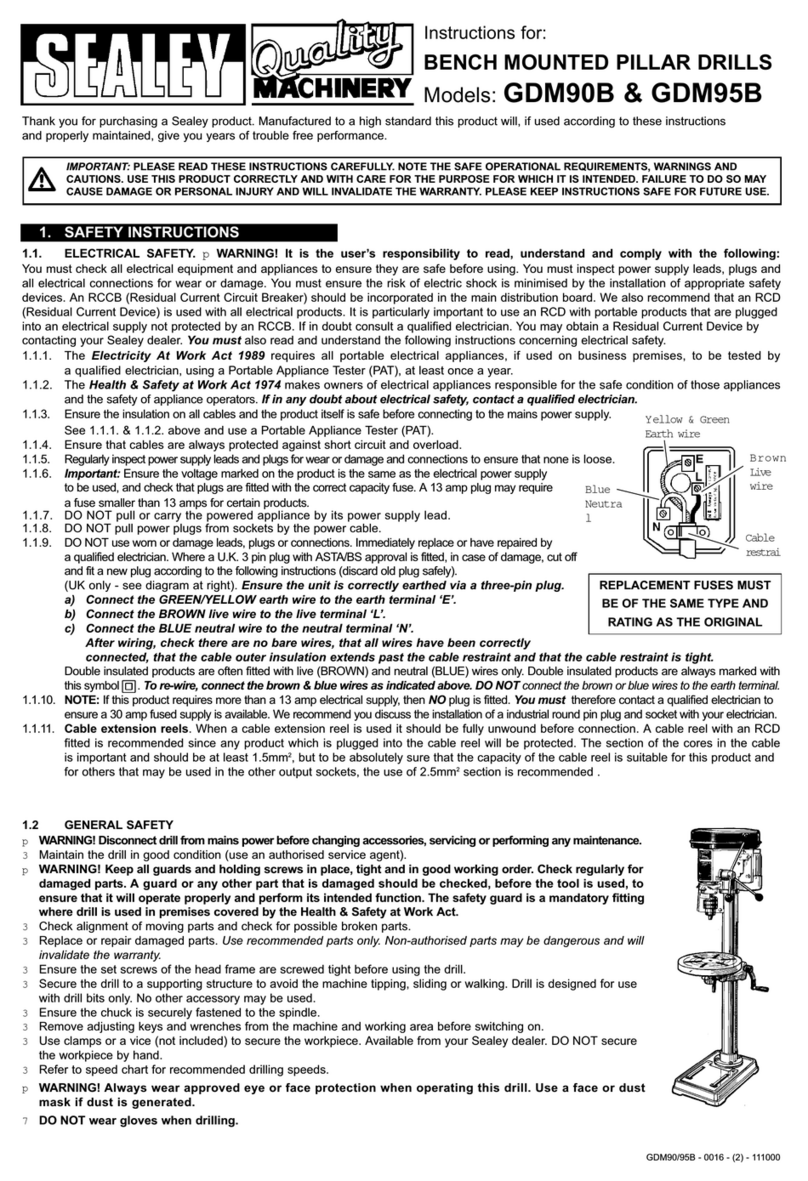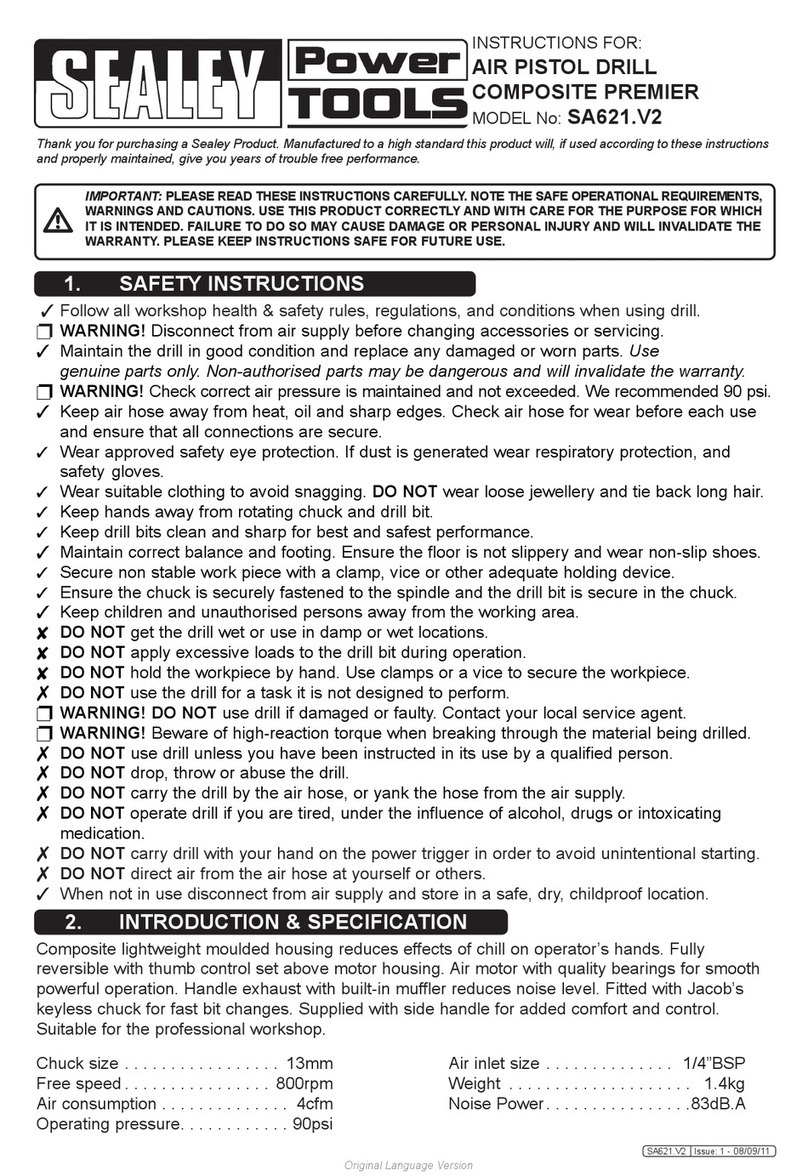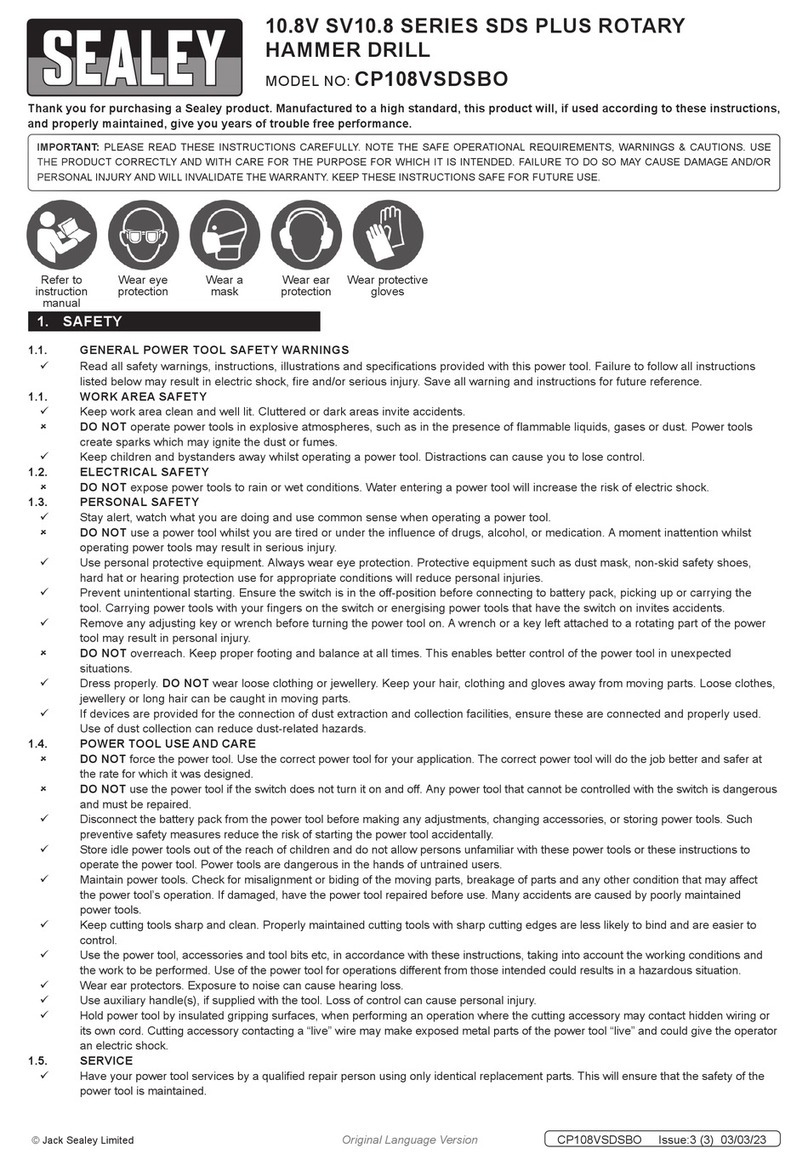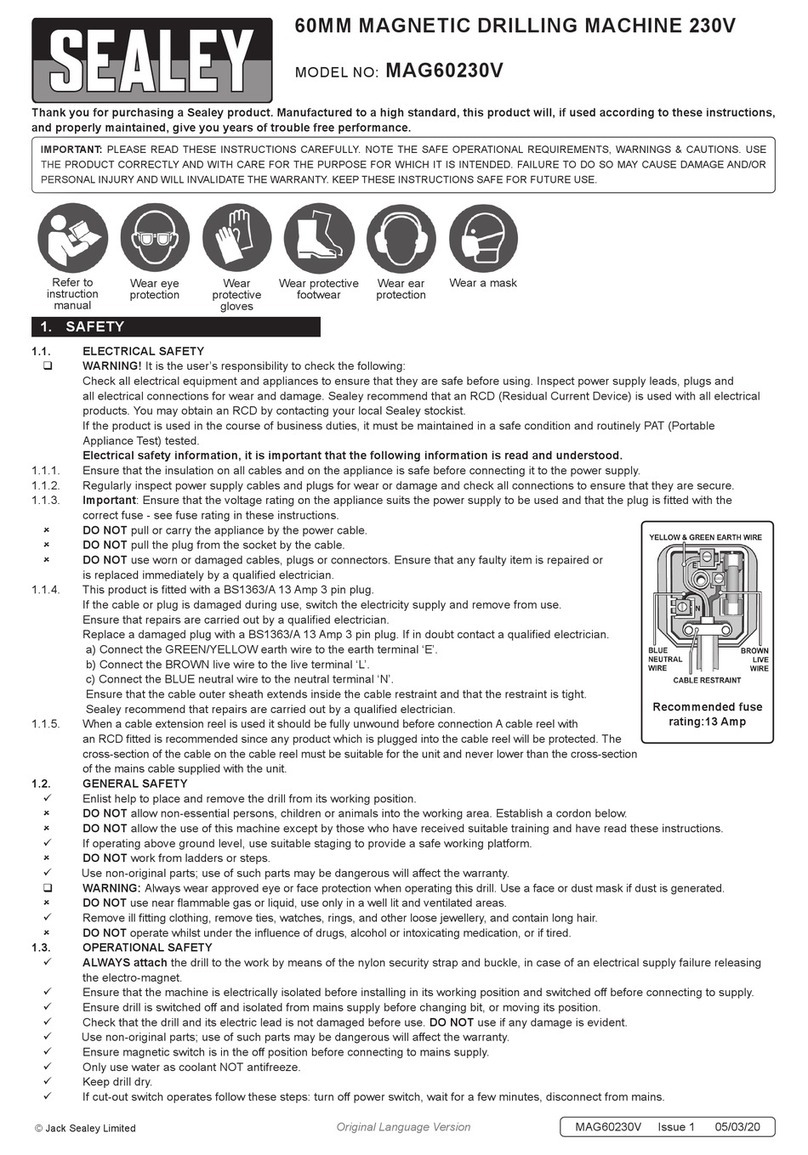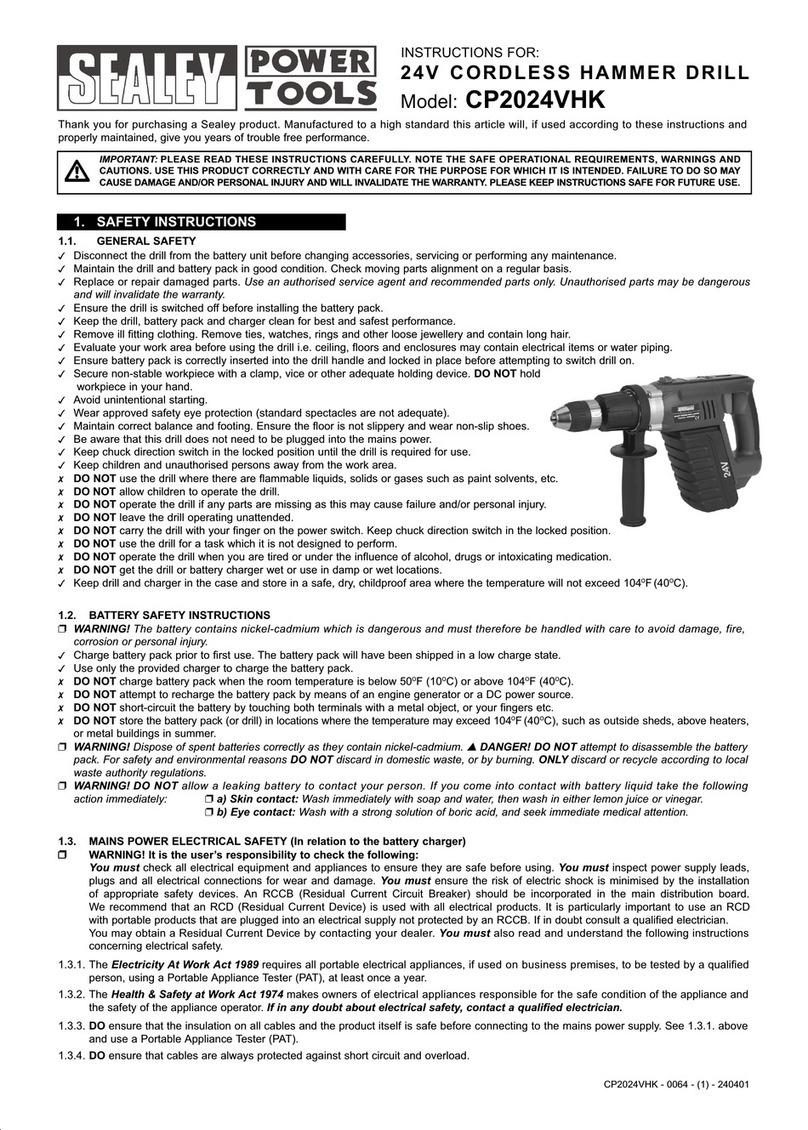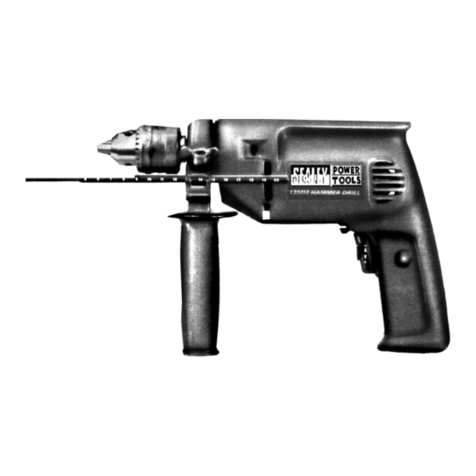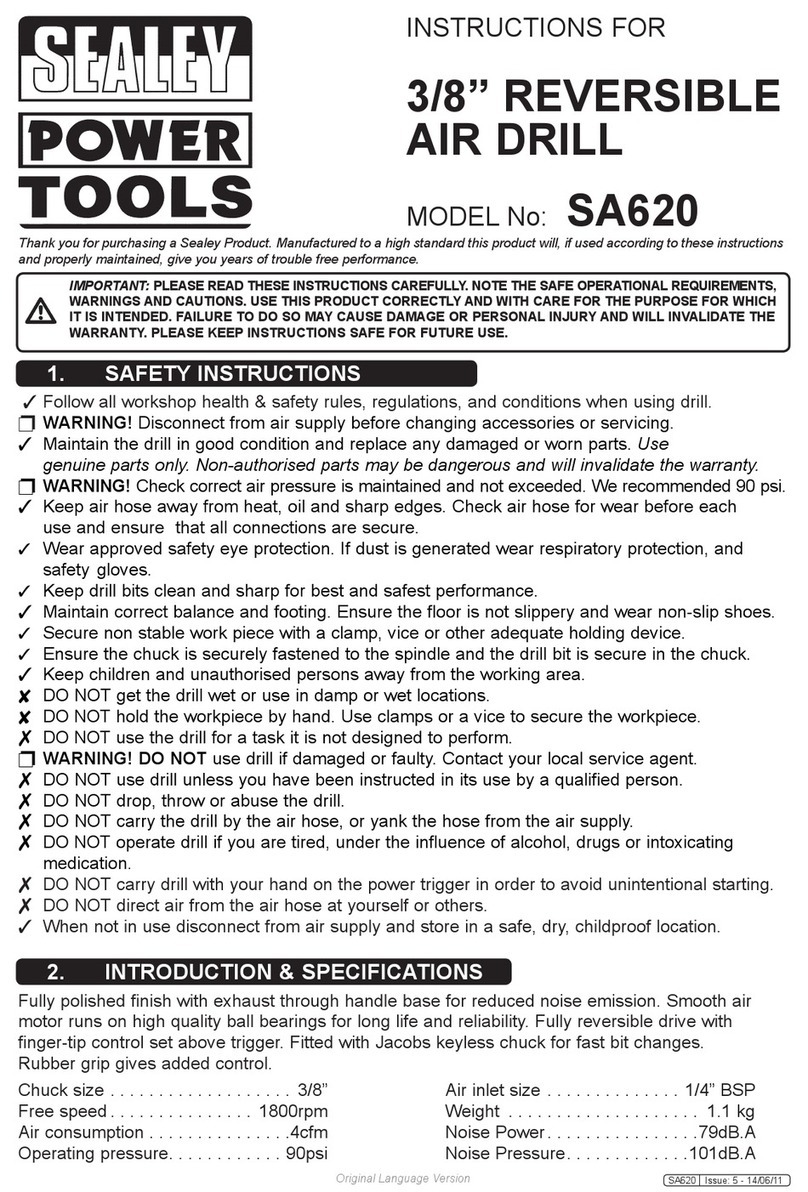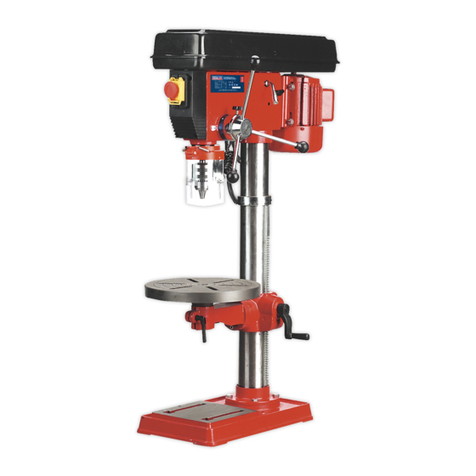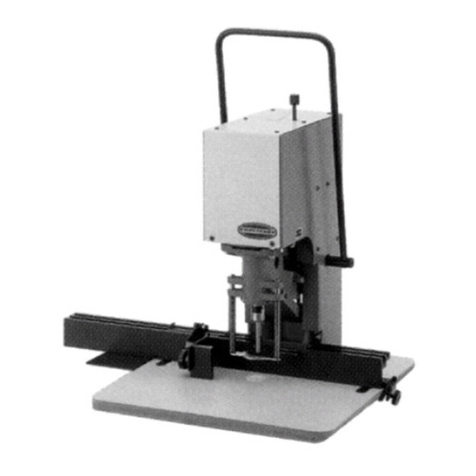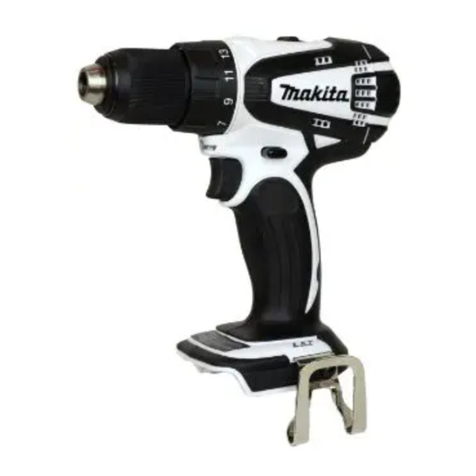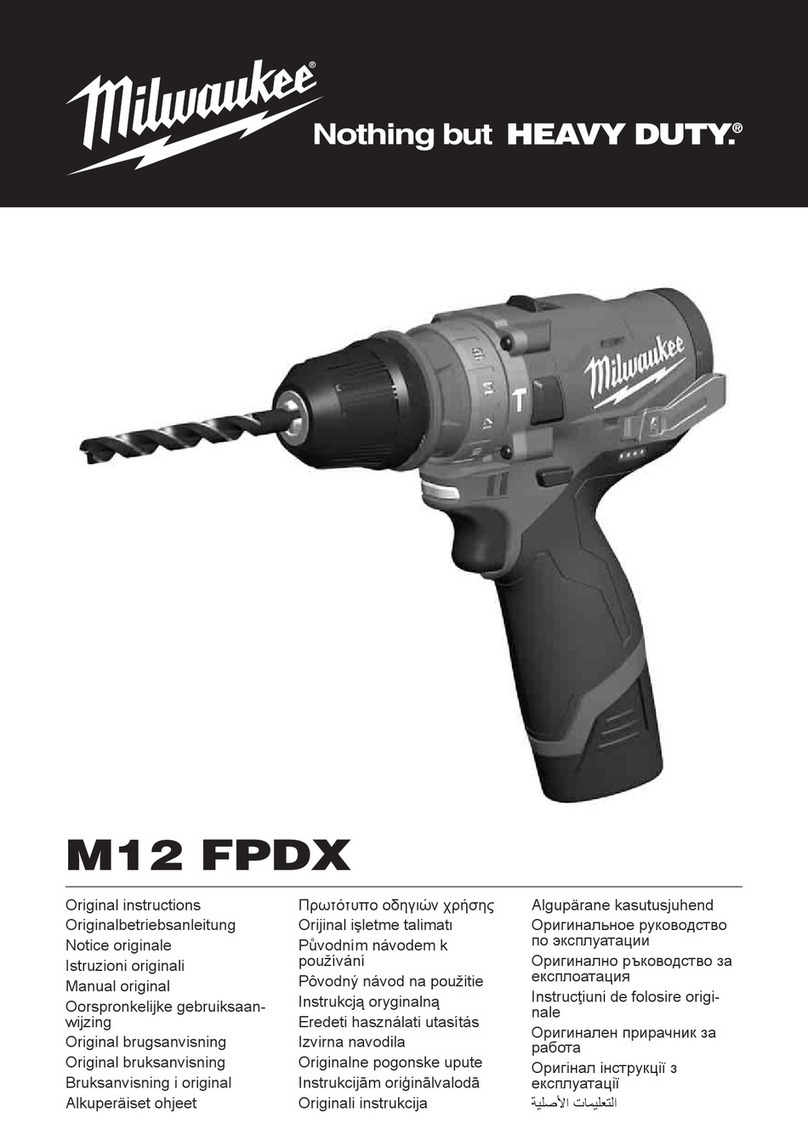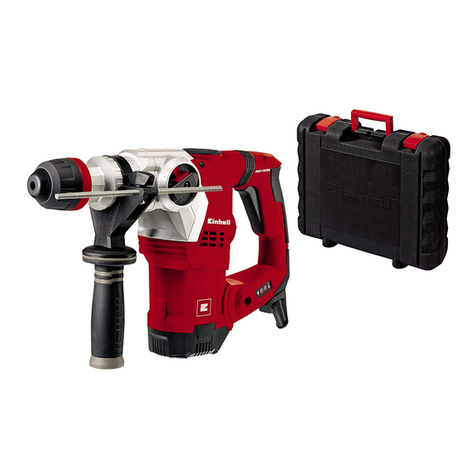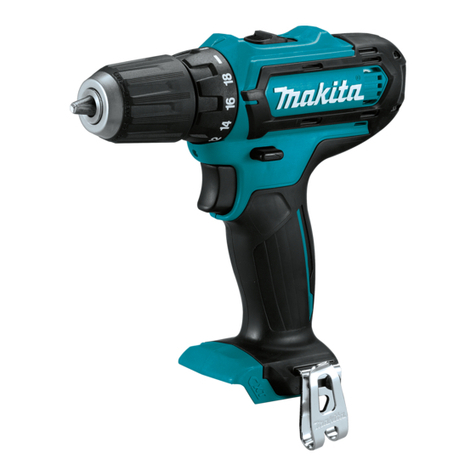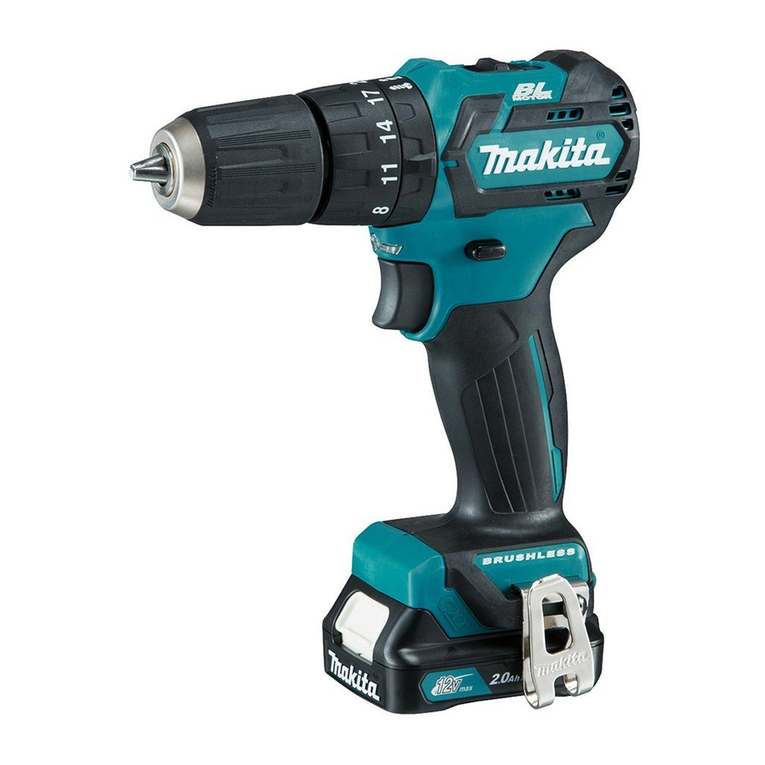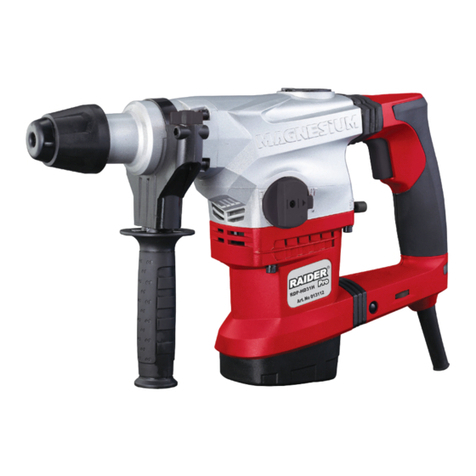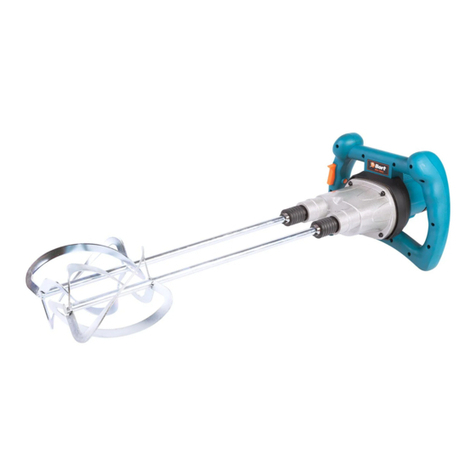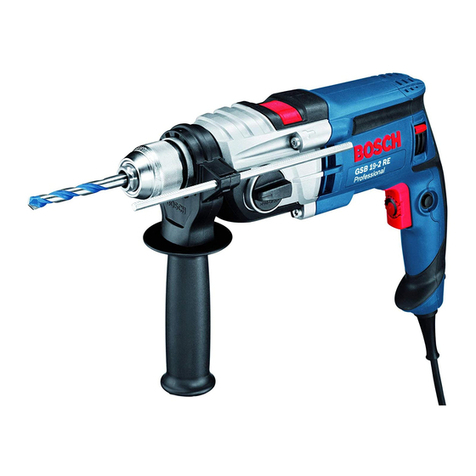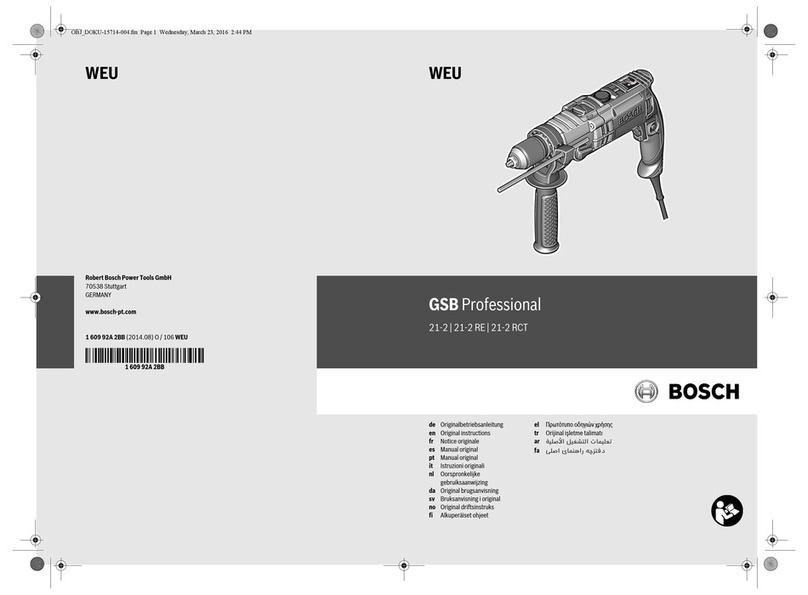
IMPORTANT: PLEASE READ THESE INSTRUCTIONS CAREFULLY. NOTE THE SAFE OPERATIONAL REQUIREMENTS, WARNINGS & CAUTIONS. USE THE PRODUCT
CORRECTLY AND WITH CARE FOR THE PURPOSE FOR WHICH IT IS INTENDED. FAILURE TO DO SO MAY CAUSE DAMAGE AND/OR PERSONAL INJURY AND WILL
INVALIDATE THE WARRANTY. KEEP THESE INSTRUCTIONS SAFE FOR FUTURE USE.
Thank you for purchasing a Sealey product. Manufactured to a high standard, this product will, if used according to these instructions
and maintained properly, give you years of trouble free performance.
Refer to instruction
manual
Wear eye
protection
Wear ear
protection
Wear a mask Wear protective
gloves
1. SAFETY
INSTRUCTIONS FOR:
REVERSIBLE AIR DRILL
MODEL NO: SA241
WARNING!
Ensure Health & Safety, local authority, and general workshop practice regulations are adhered to when using this equipment.
WARNING! Disconnect from air supply before changing drill bits, servicing,or performing any maintenance.
Maintain the drill in good condition (use an authorised service agent).
Replace or repair damaged parts. Use genuine parts only. Unauthorised parts may be dangerous and will invalidate the warranty
.
Use in a suitable work area. Keep area free from unrelated materials and ensure that there is adequate lighting.
Before each use check condition of drill bit. Sharpen if necessary. If worn or damaged replace immediately.
Ensure there are no flammable or combustible materials near the work area.
WARNING! Always wear approved eye (and/or face) and hand protection when operating the drill.
Use face, dust, or respiratory protection in accordance with COSHH regulations.
Depending on the task, the drilling noise level may exceed 84dB in which case wear safety ear defenders.
Remove ill fitting clothing. Remove ties, watches, rings, other loose jewellery and contain and/or tie back long hair.
Wear appropriate protective clothing and keep hands and body clear of working parts.
Maintain correct balance and footing. Do not over reach, ensure the floor is not slippery, wear non-slip shoes.
Keep children and unauthorised persons away from the work area.
Ensure workpiece is secure before operating the drill. Never hold a workpiece by hand.
Check the workpiece to ensure there are no protruding screws, bolts, nuts etc.
Avoid unintentional starting.
WARNING! Ensure correct air pressure is maintained and not exceeded. Recommended pressure 70-90psi.
Keep air hose away from heat, oil and sharp edges. Check air hose for wear before each use and ensure all connections are secure.
Prolonged exposure to vibration from this drill poses a health risk. It is the owner’s responsibility to correctly assess the potential hazard and
issue guidelines for safe periods of use and offer suitable protective equipment.
DO NOT use the drill for a task it is not designed to perform.
DO NOT operate drill if any parts are damaged or missing as this may cause failure and/or personal injury.
WARNING! DO NOT drill any materials containing asbestos.
DO NOT carry the drill by the hose, or pull the hose sharply from the air supply.
DO NOT force, or apply heavy pressure to the drill; let the tool do the work.
DO NOT place air line attachments close to your face and do not point at other people or animals.
DO NOT operate drill when you are tired or under the influence of alcohol, drugs or intoxicating medication.
DO NOT carry the drill with your finger on the trigger.
DO NOT direct air from the air line at yourself or others.
When not in use disconnect from air supply and store in a safe, dry, childproof location.
2. INTRODUCTION
Polished aluminium housing with textured grip handle and planetary gear drive assembly. Fitted with Ø10mm Jacobs keyless chuck. Suitable for
general workshop use.
3. SPECIFICATION
4. PREPARATION
Model No: ....................................SA241
Chuck Size: ..................................Ø10mm
Free Speed: ................................. 1800rpm
Air Consumption: .................................4cfm
Operating Pressure: ..............................90psi
Inlet Size: ....................................1/4"BSP
Weight: ........................................1.1kg
Noise Power/Pressure: ................ 102.55/91.55dB(A)
Vibration/Uncertainty: ....................... 2.06/0.7m/s²
g.1
4.1. Air Supply
Recommended hook-up procedure is shown in fig 1.
4.1.1. Ensure tool air valve (or trigger) is in “off” position before connecting to the air supply.
4.1.2. An air pressure of 90psi will be required, and an air flow according to specification.
SA241 Issue:5(L) - 06/10/17
Original Language Version
© Jack Sealey Limited
